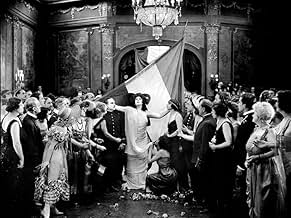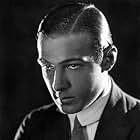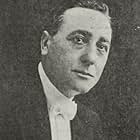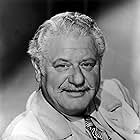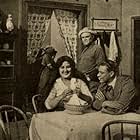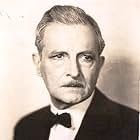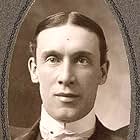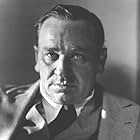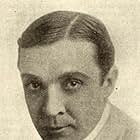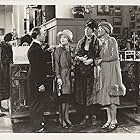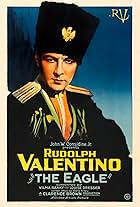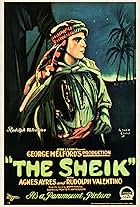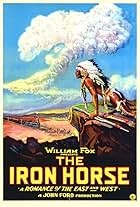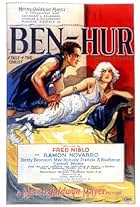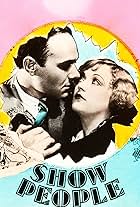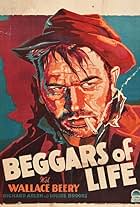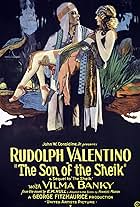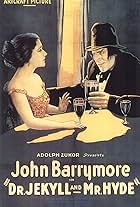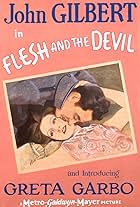IMDb RATING
7.1/10
3.6K
YOUR RATING
An extended family split up in France and Germany find themselves on opposing sides of the battlefield during World War I.An extended family split up in France and Germany find themselves on opposing sides of the battlefield during World War I.An extended family split up in France and Germany find themselves on opposing sides of the battlefield during World War I.
- Awards
- 1 win total
John St. Polis
- Etienne Laurier
- (as John Sainpolis)
Derek Ghent
- René Lacour
- (as Derrick Ghent)
Nigel De Brulier
- Tchernoff
- (as Nigel de Brulier)
Bowditch M. Turner
- Argensola
- (as Brodwitch Turner)
- Director
- Writers
- All cast & crew
- Production, box office & more at IMDbPro
Storyline
Did you know
- TriviaRudolph Valentino signed onto the film for $350 a week, less than Wallace Beery earned for his small role as a German officer. Metro provided Valentino only with his Argentine gaucho costume and his French soldier's uniform. For the Parisian sequence Valentino purchased more than 25 custom-fitted suits from a New York tailor, which he spent the next year paying for.
- GoofsThe same shot of a cat clawing at a small poodle while sitting on top of a piano is used two different times.
- Alternate versionsIn 1993 Turner Entertainment in association with Britain's Channel Four distributed a full restoration by Kevin Brownlow and David Gill's Photoplay Productions. The restoration includes many scenes that had been deleted or thought missing since the film's premiere, including original tinting and a single shot of a brief Prizma Color sequence that had been in the original release. The restored film is accompanied by a new original score composed and conducted by Carl Davis.
- ConnectionsFeatured in The Movies March On (1939)
- SoundtracksApocalypse Theme
(1993)
Music by Carl Davis
Based on the Fantasia Sonata "Après une lecture du Dante" by Franz Liszt (1849)
Performed by Orchestre Symphonique de Radio-Télé Luxembourg (as Symphony Orchestra of Radio-Télé Luxembourg) lead by Philippe Koch
In the score of the 1993 restored version
Featured review
THE FOUR HORSEMEN OF THE APOCALYPSE bring the devastation of the Great War to two Argentine sisters, one married to a Frenchman, the other to a German.
It is a shame that this wonderful film is remembered now almost solely for Rudolph Valentino's first scene, in which he dances a sensual tango. This sequence, which appears in the opening half hour, was enough to put Valentino on the movie map as an important young actor and paved the way for more libidinous roles in the future, but the film is about so much more than just a tango.
World War One had only ended in 1918, barely three years before FOUR HORSEMEN was released. The effects of the War - maimed men and fatherless children - were everywhere, and much devastation still remained in Europe. Director Rex Ingram took Vicente Blasco Ibáñez' novel and turned it into a powerful & disturbing anti-war polemic. The imagery of the Four Horsemen, riding across the screen, becomes a compelling symbol of man's inhumanity.
Although Valentino gets the attention now - and his performance is very fine, showing his character's maturity after encountering the War's harsh realities - he's not the actual star of the film. Equal kudos should also extend to Josef Swickard playing his French father, who dominates lengthy stretches of the story as he frantically reacts to his castle's desecration by the invading Germans, including his own brutal nephew.
Alice White, Ingram's wife, is wonderful as Valentino's conflicted lover, torn between passion for him and duty to her honorable husband. She adds a very real touch of class and believability, just as she would in future films directed by Ingram.
Standouts in the cast include Pomeroy Cannon as the old 'Centaur,' Valentino's hot-blooded Spanish grandfather; Alan Hale as Valentino's stern German uncle; John St. Polis as Miss Terry's affronted spouse; and bullying Wallace Beery as a crude German officer. Gaunt Nigel de Brulier is mesmerizing in his Epiphanic role as the mysterious lodger who explains to Valentino the significance of the Four Horsemen.
Movie mavens will recognize an unbilled Jean Hersholt as Hale's bearded son. Silent star Noble Johnson portrays the first Horseman, Conquest. (Supposedly Ramon Novarro is one of the extras in the Ball scene, probably as a dancer. This is very possible, as he would become a star in Ingram's film release of the following year, THE PRISONER OF ZENDA.)
Although nearly forgotten today, Rex Ingram was an excellent director who knew how to present epic photo dramas on a large scale which did not neglect the small, telling details, such as when the sweeping vistas of the Argentinean pampas gives way to the antics of a tiny pet monkey. His impish affection for the grotesque close-up is also in evidence. Ingram worked closely with his photographer Fred Seitz to achieve the play of light & shadow which enhanced the composition. But it's the authenticity of the performances which he consistently drew from his players that never fails to impress. It should be remembered that it was only six short years since the rather stagy acting of Griffith's THE BIRTH OF A NATION. Ingram had built on the Master's foundation and built well.
THE FOUR HORSEMEN is splendid to simply look at, with its restored tints & artistic title cards. Carl Davis has graced the restoration with a splendid new score which carries the viewer along, emotionally underpinning the dramatics on screen with lilting melodies and robust orchestrations.
***********************************
The original references to the Four Horsemen can be found in The Book of Revelations (sometimes called The Apocalypse of St. John) at the end of The New Testament, Chapter 6, verses 1-8 (KJV):
And I saw when the Lamb opened one of the seals, and I heard, as it were the noise of thunder, one of the four beasts saying, Come and see.
And I saw, and behold a white horse: and he that sat on him had a bow; and a crown was given unto him; and he went forth conquering, and to conquer.
And when he had opened the second seal, I heard the second beast say, Come and see.
And there went out another horse that was red: and power was given to him that sat thereon to take peace from the earth, and that they should kill one another: and there was given unto him a great sword.
And when he had opened the third seal, I heard the third beast say, Come and see. And I beheld, and lo a black horse; and he that sat on him had a pair of balances in his hand.
And I heard a voice in the midst of the four beasts say, A measure of wheat for a penny, and three measures of barley for a penny; and see thou hurt not the oil and the wine.
And when he had opened the fourth seal, I heard the voice of the fourth beast say, Come and see. And I looked, and behold a pale horse: and his name that sat on him was Death, and Hell followed with him. And power was given unto them over the fourth part of the earth, to kill with sword, and with hunger, and with death, and with the beasts of the earth.
It is a shame that this wonderful film is remembered now almost solely for Rudolph Valentino's first scene, in which he dances a sensual tango. This sequence, which appears in the opening half hour, was enough to put Valentino on the movie map as an important young actor and paved the way for more libidinous roles in the future, but the film is about so much more than just a tango.
World War One had only ended in 1918, barely three years before FOUR HORSEMEN was released. The effects of the War - maimed men and fatherless children - were everywhere, and much devastation still remained in Europe. Director Rex Ingram took Vicente Blasco Ibáñez' novel and turned it into a powerful & disturbing anti-war polemic. The imagery of the Four Horsemen, riding across the screen, becomes a compelling symbol of man's inhumanity.
Although Valentino gets the attention now - and his performance is very fine, showing his character's maturity after encountering the War's harsh realities - he's not the actual star of the film. Equal kudos should also extend to Josef Swickard playing his French father, who dominates lengthy stretches of the story as he frantically reacts to his castle's desecration by the invading Germans, including his own brutal nephew.
Alice White, Ingram's wife, is wonderful as Valentino's conflicted lover, torn between passion for him and duty to her honorable husband. She adds a very real touch of class and believability, just as she would in future films directed by Ingram.
Standouts in the cast include Pomeroy Cannon as the old 'Centaur,' Valentino's hot-blooded Spanish grandfather; Alan Hale as Valentino's stern German uncle; John St. Polis as Miss Terry's affronted spouse; and bullying Wallace Beery as a crude German officer. Gaunt Nigel de Brulier is mesmerizing in his Epiphanic role as the mysterious lodger who explains to Valentino the significance of the Four Horsemen.
Movie mavens will recognize an unbilled Jean Hersholt as Hale's bearded son. Silent star Noble Johnson portrays the first Horseman, Conquest. (Supposedly Ramon Novarro is one of the extras in the Ball scene, probably as a dancer. This is very possible, as he would become a star in Ingram's film release of the following year, THE PRISONER OF ZENDA.)
Although nearly forgotten today, Rex Ingram was an excellent director who knew how to present epic photo dramas on a large scale which did not neglect the small, telling details, such as when the sweeping vistas of the Argentinean pampas gives way to the antics of a tiny pet monkey. His impish affection for the grotesque close-up is also in evidence. Ingram worked closely with his photographer Fred Seitz to achieve the play of light & shadow which enhanced the composition. But it's the authenticity of the performances which he consistently drew from his players that never fails to impress. It should be remembered that it was only six short years since the rather stagy acting of Griffith's THE BIRTH OF A NATION. Ingram had built on the Master's foundation and built well.
THE FOUR HORSEMEN is splendid to simply look at, with its restored tints & artistic title cards. Carl Davis has graced the restoration with a splendid new score which carries the viewer along, emotionally underpinning the dramatics on screen with lilting melodies and robust orchestrations.
***********************************
The original references to the Four Horsemen can be found in The Book of Revelations (sometimes called The Apocalypse of St. John) at the end of The New Testament, Chapter 6, verses 1-8 (KJV):
And I saw when the Lamb opened one of the seals, and I heard, as it were the noise of thunder, one of the four beasts saying, Come and see.
And I saw, and behold a white horse: and he that sat on him had a bow; and a crown was given unto him; and he went forth conquering, and to conquer.
And when he had opened the second seal, I heard the second beast say, Come and see.
And there went out another horse that was red: and power was given to him that sat thereon to take peace from the earth, and that they should kill one another: and there was given unto him a great sword.
And when he had opened the third seal, I heard the third beast say, Come and see. And I beheld, and lo a black horse; and he that sat on him had a pair of balances in his hand.
And I heard a voice in the midst of the four beasts say, A measure of wheat for a penny, and three measures of barley for a penny; and see thou hurt not the oil and the wine.
And when he had opened the fourth seal, I heard the voice of the fourth beast say, Come and see. And I looked, and behold a pale horse: and his name that sat on him was Death, and Hell followed with him. And power was given unto them over the fourth part of the earth, to kill with sword, and with hunger, and with death, and with the beasts of the earth.
- Ron Oliver
- Jul 28, 2005
- Permalink
- How long is The Four Horsemen of the Apocalypse?Powered by Alexa
Details
- Release date
- Country of origin
- Language
- Also known as
- Četiri konjanika Apokalipse
- Filming locations
- Gilmore Ranch, Fairfax, Los Angeles, California, USA(South American scenes)
- Production company
- See more company credits at IMDbPro
Box office
- Budget
- $800,000 (estimated)
- Gross US & Canada
- $9,183,673
- Gross worldwide
- $9,183,673
- Runtime2 hours 30 minutes
- Sound mix
- Aspect ratio
- 1.33 : 1
Contribute to this page
Suggest an edit or add missing content

Top Gap
By what name was The Four Horsemen of the Apocalypse (1921) officially released in India in English?
Answer


